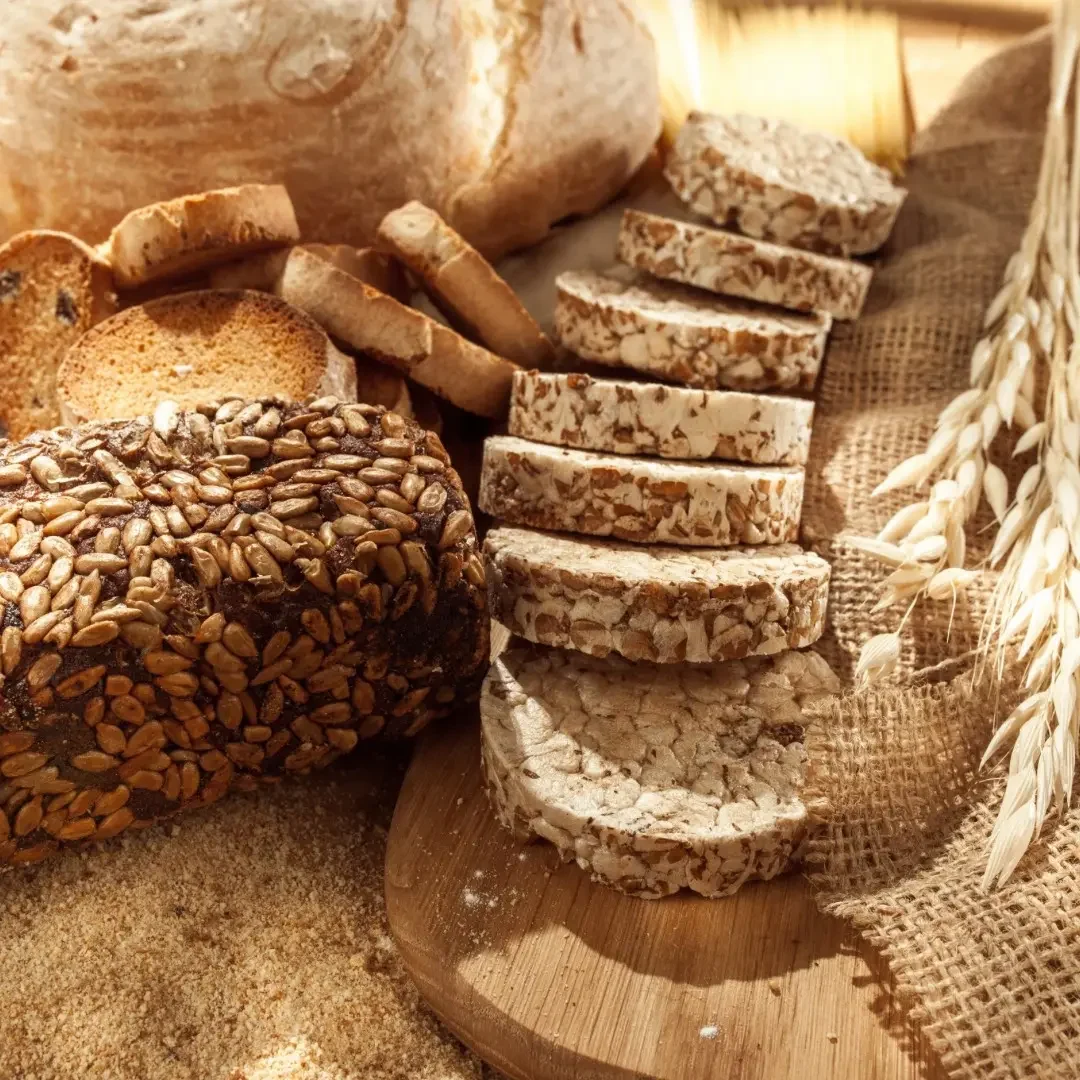In today’s world, gluten is a significant concern for many individuals due to health conditions like celiac disease, non-celiac gluten sensitivity, and wheat allergies. For those who need to avoid gluten, knowing which foods are high in gluten is crucial for maintaining a healthy diet. Here, we’ll explore eight common foods that are notoriously high in gluten and explain why it’s essential to steer clear of them if you’re following a gluten-free lifestyle.
1. Bread
Bread is a staple in many diets, but it is often packed with gluten. Traditional bread is made from wheat flour, which contains high levels of gluten. This protein gives bread its chewy texture and helps it rise. However, for those with gluten sensitivities or celiac disease, consuming bread can lead to digestive discomfort and long-term health issues.
Why Avoid It?: Traditional bread contains a significant amount of gluten, which can cause inflammation and damage to the small intestine in individuals with celiac disease. Even people with gluten sensitivity may experience bloating, gas, or abdominal pain after eating gluten-containing bread.
2. Pasta
Pasta, like bread, is another food that typically contains high levels of gluten. Made from durum wheat, pasta’s elasticity and texture come from its gluten content. Although there are gluten-free pasta options available, standard pasta is a common dietary staple that many people need to avoid.
Why Avoid It?: Consuming gluten-containing pasta can lead to similar issues as bread, including digestive problems and exacerbation of autoimmune responses in those with celiac disease. It’s essential to opt for gluten-free alternatives to prevent adverse reactions.
3. Pizza
Pizza is a popular comfort food, but it often features a crust made from wheat flour, making it high in gluten. The dough is typically leavened with yeast, which relies on gluten to provide the chewy and satisfying texture that pizza lovers enjoy.
Why Avoid It?: Gluten in pizza crust can trigger symptoms in those with gluten-related disorders, including pain, fatigue, and skin rashes. Many pizzerias now offer gluten-free crust options, but it’s important to ensure they are truly gluten-free and not cross-contaminated.
4. Cakes and Pastries
Cakes, pastries, and other baked goods often contain large amounts of gluten, thanks to their use of wheat flour and other gluten-rich ingredients. These sweet treats are made with flour that provides structure and texture.
Why Avoid It?: Gluten can cause significant issues for people with celiac disease and gluten sensitivity, including severe gastrointestinal symptoms and nutrient malabsorption. For those looking to enjoy baked goods, gluten-free options are available and can be just as delicious.
5. Cookies
Cookies, much like cakes and pastries, are typically made with wheat flour. Whether they are chocolate chip, oatmeal, or sugar cookies, the flour used contains gluten, which contributes to their texture and consistency.
Why Avoid It?: Eating cookies made with gluten can lead to similar health problems as other baked goods. Those with gluten intolerance or celiac disease should seek out gluten-free cookies or bake their own using gluten-free flours.
6. Crackers
Crackers are a common snack that often contain wheat flour, making them high in gluten. They are used in many diets as a quick snack or as a base for various toppings, but traditional crackers are not suitable for a gluten-free diet.
Why Avoid It?: Gluten-containing crackers can cause digestive issues and discomfort for those with gluten-related conditions. Gluten-free alternatives are available and can provide a similar crunch without the adverse effects.
7. Beer
Beer is typically brewed from barley, which is a grain high in gluten. While there are gluten-free beers on the market, regular beer contains enough gluten to affect those with celiac disease or gluten sensitivity.
Why Avoid It?: Drinking beer with gluten can trigger symptoms like bloating, gas, and nausea. Individuals needing to avoid gluten should opt for gluten-free beers or alternative beverages that do not contain gluten.
8. Soy Sauce
Soy sauce is a popular condiment used in many cuisines, particularly in Asian dishes. Traditional soy sauce is brewed with wheat, making it high in gluten. This can be surprising to some, as it is not always obvious that soy sauce contains gluten.
Why Avoid It?: Consuming soy sauce can lead to gluten-related reactions, especially in those with celiac disease or gluten sensitivity. Gluten-free soy sauce options, such as tamari, are available and can be used as a substitute.
Our Solution to Gluten-Free Eating
Navigating a gluten-free diet can be challenging, especially when trying to avoid common foods that contain gluten. Fortunately, you don’t have to worry about deciphering labels or finding safe options on your own. At Valley’s Bakery, our menu is 100% gluten-free, ensuring that you can enjoy delicious baked goods and treats without the stress of gluten-related concerns.
Our bakery takes pride in offering a wide variety of gluten-free products that cater to your dietary needs without compromising on flavor or quality. From freshly baked bread to decadent cakes and pastries, we have something for everyone to enjoy.
Say goodbye to the hassle of avoiding gluten and discover the joy of worry-free eating at Valley’s Bakery. Our dedicated team is here to provide you with delectable gluten-free options that you can enjoy with confidence. Visit us today and experience how delicious and stress-free gluten-free living can be!




